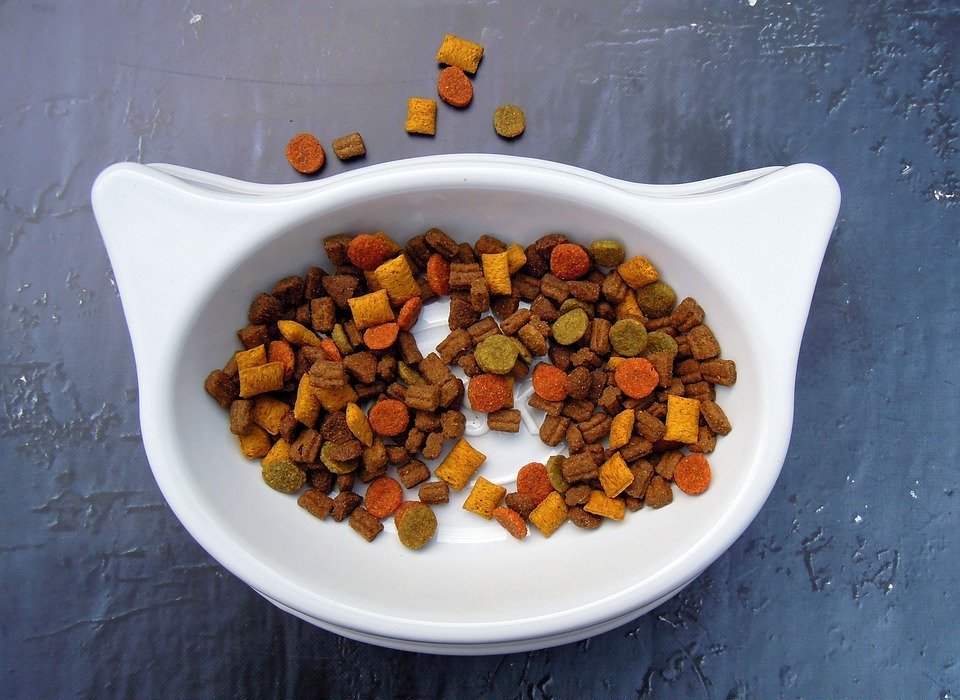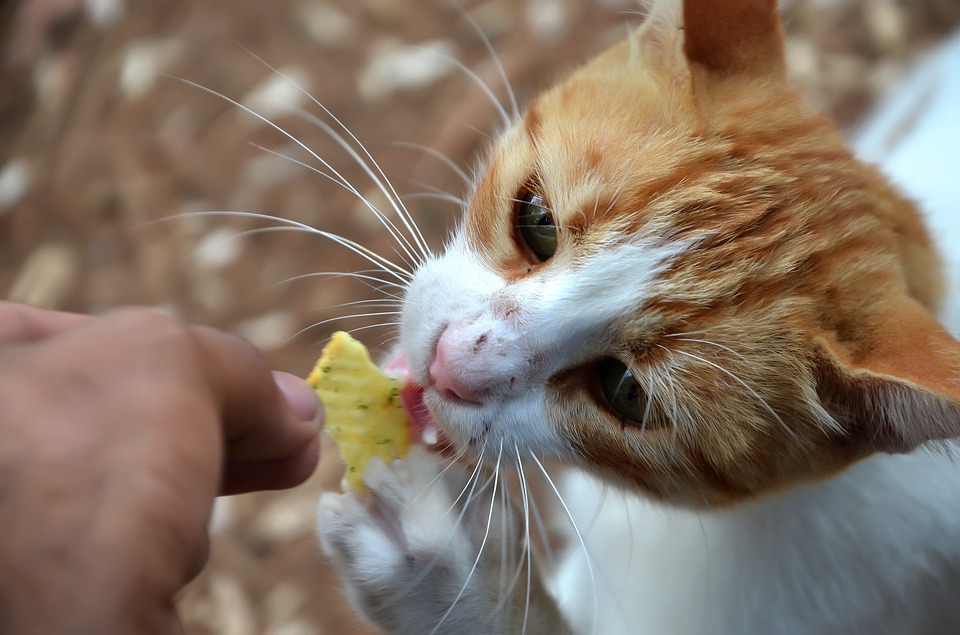This comprehensive guide delves into the safety of feeding ham to cats, exploring its nutritional content, potential risks, and alternative treats. We'll also discuss the importance of consulting with a veterinarian for personalized advice regarding your cat's dietary needs.
Part 1: The Nutritional Content of Ham

1.1. Protein and Fat Content
Ham, a cured and processed meat product, is typically high in protein and fat, though the specific breakdown varies depending on the type of ham and curing process. For instance, cooked ham generally has a lower fat content than raw or smoked ham. While protein is essential for cat health, excessive fat intake can lead to weight gain, particularly in indoor cats or those with less active lifestyles.
1.2. Salt and Sodium Content
Ham is often heavily salted during the curing process, leading to a high sodium content. The exact sodium levels vary depending on the type of ham and the amount of salt used. High sodium intake can strain a cat's kidneys and contribute to various health issues, particularly in older cats or those with pre-existing kidney conditions.
1.3. Other Additives and Preservatives
Beyond salt, ham may contain various additives and preservatives, including nitrates, nitrites, and phosphates. These are used to enhance flavour, colour, and shelf life. While small amounts might not be harmful, these additives can be toxic to cats in large quantities, potentially leading to digestive upset, allergies, or even more serious health issues like liver damage.
1.4. Understanding the Curing Process
Ham curing involves various methods like salting, smoking, and drying, which significantly alters the composition of the meat. These processes can break down proteins, create new compounds, and add additional flavours. While this might appeal to human palates, it introduces a greater risk for cats with their sensitive digestive systems.
1.5. Nutritional Comparison
To understand the nutritional differences, consider comparing ham to cat-specific foods. Commercial cat food is typically formulated to meet a cat's specific needs, with balanced protein, fat, and essential nutrients. Ham, on the other hand, is designed for human consumption and lacks the necessary balance for feline health.
Part 2: The Risks of Feeding Ham to Cats

2.1. Digestive Issues
Ham is difficult for cats to digest due to its high fat and salt content, as well as the presence of other additives. Consuming ham can lead to vomiting, diarrhoea, and other digestive disturbances, potentially causing discomfort and dehydration.
2.2. Pancreatitis
The high fat content in ham can trigger pancreatitis, a serious inflammation of the pancreas. This condition can lead to severe abdominal pain, vomiting, and lethargy. In some cases, it can even be life-threatening if not treated promptly.
2.3. Kidney Problems
The high sodium content in ham can put extra strain on a cat's kidneys, especially in cats with pre-existing kidney conditions. Long-term sodium intake can contribute to kidney failure, a serious and potentially fatal condition.
2.4. Obesity
Frequent consumption of ham can contribute to weight gain due to its high fat content. Obesity can lead to various health problems in cats, including joint issues, diabetes, heart disease, and reduced lifespan.
2.5. Allergies
Some cats may be allergic to pork or other ingredients found in ham. Allergic reactions can range from mild skin irritation to severe anaphylaxis, which can be life-threatening.
2.6. Potential for Bacterial Contamination
Though processed, ham can still harbor bacteria like Salmonella or Listeria, which are harmful to cats. While cooking usually eliminates these, improper handling or storage can increase the risk of contamination.
Part 3: Safe Alternatives to Ham

3.1. Commercial Cat Treats
A wide variety of commercial cat treats are available, offering a safe and nutritious alternative to ham. Look for treats that are specifically formulated for cats and contain high-quality ingredients. Avoid treats with added sugar, artificial colours, or excessive sodium.
3.2. Homemade Cat Treats
You can make healthy and delicious cat treats at home using safe ingredients like chicken, fish, and vegetables. Ensure these treats are cooked thoroughly and free from harmful ingredients like onions, garlic, and chocolate.
3.3. Fruits and Vegetables
Some fruits and vegetables are safe for cats in moderation. Examples include blueberries, strawberries, and cooked pumpkin. Always consult a veterinarian before introducing new foods to your cat's diet.
3.4. Understanding Cat Dietary Needs
Cats are obligate carnivores, requiring a diet rich in animal protein. While ham can provide some protein, it lacks the essential nutrients and balance found in cat-specific foods. It's important to prioritize a diet tailored to their needs.
3.5. Choosing Safe Commercial Treats
When selecting commercial cat treats, look for brands with high-quality ingredients, like meat as the primary ingredient, and avoid those with artificial additives and fillers.
Part 4: When to Consult a Veterinarian
It's crucial to consult a veterinarian before feeding your cat any human food, including ham. Your vet can assess your cat's individual needs and provide personalized recommendations regarding safe and appropriate foods based on their age, health conditions, and lifestyle.
Part 5: Signs of Food Poisoning in Cats
If you suspect your cat has ingested ham or any other potentially harmful food, monitor them closely for signs of food poisoning. These signs may include:
- Vomiting
- Diarrhoea
- Loss of appetite
- Lethargy
- Abdominal pain
- Dehydration
- Excessive drooling
- Difficulty breathing
- Tremors or seizures
If you observe any of these signs, seek immediate veterinary attention.
Part 6: FAQs
6.1. Can Cats Eat Cooked Ham?
While cooked ham is generally considered safer than raw ham, it's still not recommended for cats due to its high fat and salt content.
6.2. Can Cats Eat Ham Bone?
Ham bones are extremely dangerous for cats. They can splinter and cause severe internal damage, including choking hazards, intestinal blockages, and puncture wounds.
6.3. Can Cats Eat Ham Fat?
Ham fat is particularly harmful to cats. It's high in saturated fat and can lead to digestive upset, pancreatitis, and obesity.
6.4. Can Cats Eat Ham Skin?
Ham skin is often cured and processed with high levels of salt and preservatives, making it unsafe for cats.
6.5. What Should I Do If My Cat Eats Ham?
If your cat eats ham, observe them closely for any signs of illness. Contact your veterinarian for guidance, especially if you notice any symptoms of food poisoning.
6.6. Can Cats Eat Ham Every Day?
No, cats should not eat ham every day. It's a high-fat, high-sodium treat that should only be given in very small quantities, if at all.
6.7. Is There a Safe Way to Feed Ham to Cats?
While there's no safe way to feed ham to cats, there are plenty of other safe and nutritious treats available. Consult your veterinarian for recommendations.
Conclusion
Feeding ham to cats is not recommended due to its high fat, salt, and potentially harmful additives. Always prioritize your cat's health and well-being by providing a balanced and nutritious diet. Consult with a veterinarian for personalized advice regarding safe foods and treats for your feline friend.
Everyone is watching
-

Are Cat Ribs Flexible? Understanding Their Anatomy
CATS & KITTENSThis article delves into the fascinating world of feline anatomy, exploring the flexibility of cat ribs and ho...
-

Can Cats Eat Bananas? (Everything You Need to Know)
CATS & KITTENSThis article dives into the intriguing question of whether cats can safely enjoy the sweet, yellow fruit, bana...
-

Cat Lifespan: How Long Do Cats Live?
CATS & KITTENSThis comprehensive guide explores the factors influencing the lifespan of our feline companions, providing ins...
-

Can Cats Get COVID-19? What You Need to Know
CATS & KITTENSThis article will delve into the fascinating world of feline COVID-19 susceptibility. We'll explore whether ca...
-

Can Cats Eat Eggs? A Complete Guide to Egg Safety for Your Feline Friend
CATS & KITTENSWhen it comes to treating our furry companions, we all want to ensure we're doing what's best for them. Eggs...
